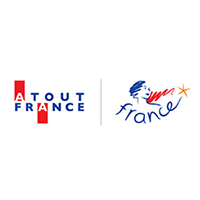Cambodia
Name: Kampong Thom
Khmer Name: កំពង់ធំ
Status: Province
Area: 13,814 km²
Population: 19,951 (2008)
Located at the central point of the Kingdom of Cambodia, Kampong Thom Province is a beautiful tourist destination where travelers can stop for a quick snack on their way to Siem Reap or Phnom Penh. In addition to the province's great beauty and charming villages, visitors can explore numerous historical monuments and sites during their time in Kampong Thom.
History
Under the Funan Kingdom, Kampong Thom was a powerful capital in Southeast Asia. During the French colonial period, the province was home to the Stieng people, who later merged with the Khmer society. Originally, the province was called "Kampong Pos Thom," referring to large snakes. It is said that near the large natural lake by the Sen River, there was a cave inhabited by these great serpents, which only appeared during Buddhist festivals. To this day, the name has been shortened to "Kampong Thom."
Today
Description
Kampong Thom is the second-largest province in Cambodia, located along the Sen River, a tributary of the Tonlé Sap. The provincial capital, also named Kampong Thom, is a picturesque town located in the Stung Saen district. Situated on National Road No. 6 between Phnom Penh and Siem Reap, the province is divided into two main areas:
- Northeastern Area: Comprising forests and plateaus, this region is rich in natural resources and extremely fertile.
- Southwestern Area: Located along National Road No. 6, covering about 30% of the province, this flatland area extends to Tonlé Sap Lake. This part of the province is ideal for rice cultivation and fishing, meeting the needs of the entire country. Additionally, the province is one of the largest producers of cashew nuts in Cambodia.
What to see in Kampong Thom?
I/ I. Historical monuments in Kampong Thom
- Sambor Prei Kuk Temple
Sambor Prei Kuk is a famous temple located 35 km from the provincial capital. Considered a pre-Angkorian site, it was established in the early 7th century during the reign of King Içanavarman I. It is the oldest monument in Cambodia. The temple complex is divided into three groups: Prasat Sambor (northern part), Prasat Tao or Temple of Lions (central part), and Prasat Yeaye Peou (southern part). In total, 52 sanctuaries, both large and small, are preserved within the temple complex, while 52 others are buried and form small hills. To visit, a round trip by moto-taxi will take about two hours. The entrance fee is $3 USD per person.
- Prasat Kuh Nokor Temple
Located in the village of Trodoc Poung, Prasat Kuh Nokor belongs to the Wat Kuh Nokor Buddhist complex. Dating back to the 11th century, it is well preserved. The temple is situated 69 km from Kampong Thom. The sanctuaries are built on a large expanse of land, on a square terrace made of laterite and sandstone, facing east.
- Prasat Phum Prasat Temple
Located 27 km from the town, this temple features brick and sandstone structures dating back to the 8th century.
- Prasat Andet Temple
Constructed in the second half of the 7th century, between 627 and 707, this temple is made from brick, laterite, and sandstone.
- Kohear Nokor Temple
This 11th-century Hindu temple is another notable site in Kampong Thom.
II. Other Sites to Visit in Kampong Thom
In addition to the temples and historical monuments, you can visit the Boeng Tonle Chmar Bird Sanctuary. The Prasat Kok Rokar temple, Wat Kampong Thom pagoda, and Wat Kdei Deum temple are also worth a visit. The Preah Bat Chan Tuk historical site, known for its ancient stone carvings and massive Buddha statue, is another significant site. Finally, don't miss the natural beach resort Prey Pros.
III/ Kampong Thom’s Culinary Specialties
Kampong Thom offers several restaurants serving traditional Cambodian dishes, as well as western-style meals.
The province’s culinary specialty is fried tarantulas, available in Skun village. Often sold by the dozen, these tarantulas are either alive or cooked. You’ll find women carrying trays of them on their heads at the local market.
You can also enjoy Khmer cuisine at a local restaurant near the market.
IV/ Cultural visits
Visit the Ka Kos Craft Village
Located 16 km from Kampong Thom, this village is home to artisans who carve statues and figurines from rocks found at the foot of Mount Santhuk. Another popular craft is the Krama, a scarf used by Khmers, which makes for a great souvenir. Silk shirts and handbags are also available.
Artisan Villages of Kampong Thom
If you are interested in traditional Cambodian craftsmanship, you can visit villages specializing in silk weaving, lacquer work, pottery, leather work, stone carving, and goldsmithing.
Rural Kampong Thom
The rural areas around Kampong Thom offer a great opportunity to experience the daily life of the Cambodians. You’ll still see oxen-drawn carts, fishermen pulling in their nets, and villagers living at the pace of the countryside. Moto-taxis are available along the Sambor Prei Kuk route, offering rides to nearby villages. If you enjoy tuk-tuk rides, you can hire one to explore the small villages.
Geography and population
Kampong Thom Province covers a total area of 15,061 square kilometers and is divided into 8 districts, 81 communes, and 737 villages. The northern part of Kampong Thom borders Preah Vihear and Siem Reap, while to the east it borders Kratie, to the south Kampong Cham, and to the west Kampong Chhnang.
Two of the three main areas of the Tonlé Sap Biosphere Reserve are located in Kampong Thom: Boeng Chhmar (14,560 hectares) and Stung Saen.
Population:
The province has a population of just over 700,000, making up 4.5% of Cambodia’s total population. Of the population, 48.3% are male, and 51.7% are female. Economically, 85% of the population are farmers, 4.6% are fishermen, 15% are traders, and 0.97% work in government positions.
Climate
The country experiences a hot, humid tropical climate. The monsoon season brings abundant rainfall, which supports Cambodia's diverse agricultural practices. Cambodia is not directly impacted by natural disasters like volcanic eruptions, earthquakes, or tropical storms. The average temperature in Kampong Thom ranges from 16°C to 27°C.
How to get there?
You can reach Kampong Thom Province by bus, taxi, or minibus from Siem Reap, Phnom Penh, and Kampong Cham. Travel costs between $7-$8 USD from Phnom Penh and $5-$6 USD from Siem Reap. The province is also accessible by National Road No. 6, which connects Siem Reap and Phnom Penh.
Getting around
To explore Kampong Thom, you can rent a moto-taxi or take a tuk-tuk.
Things to do in Kampong Thom
- Kampong Thom has beautiful waterfronts where you can take leisurely walks in the evening. You can watch hundreds of giant bats take flight at sunset near colonial-era buildings.
- Visit Phnom Santuk Hill, a pilgrimage site with lush vegetation and a stunning panoramic view.
- Take walks along the shores of Tonlé Sap Lake.
- Visit the temples and historical sites of Kampong Thom.
- Try the province's famous culinary specialty: fried tarantulas.
Best time to visit Kampong Thom
Like other provinces in Cambodia, Kampong Thom can be visited year-round. However, during the rainy season, some rural roads become nearly impassable. The best months to visit are December and January, while April is the hottest month.

